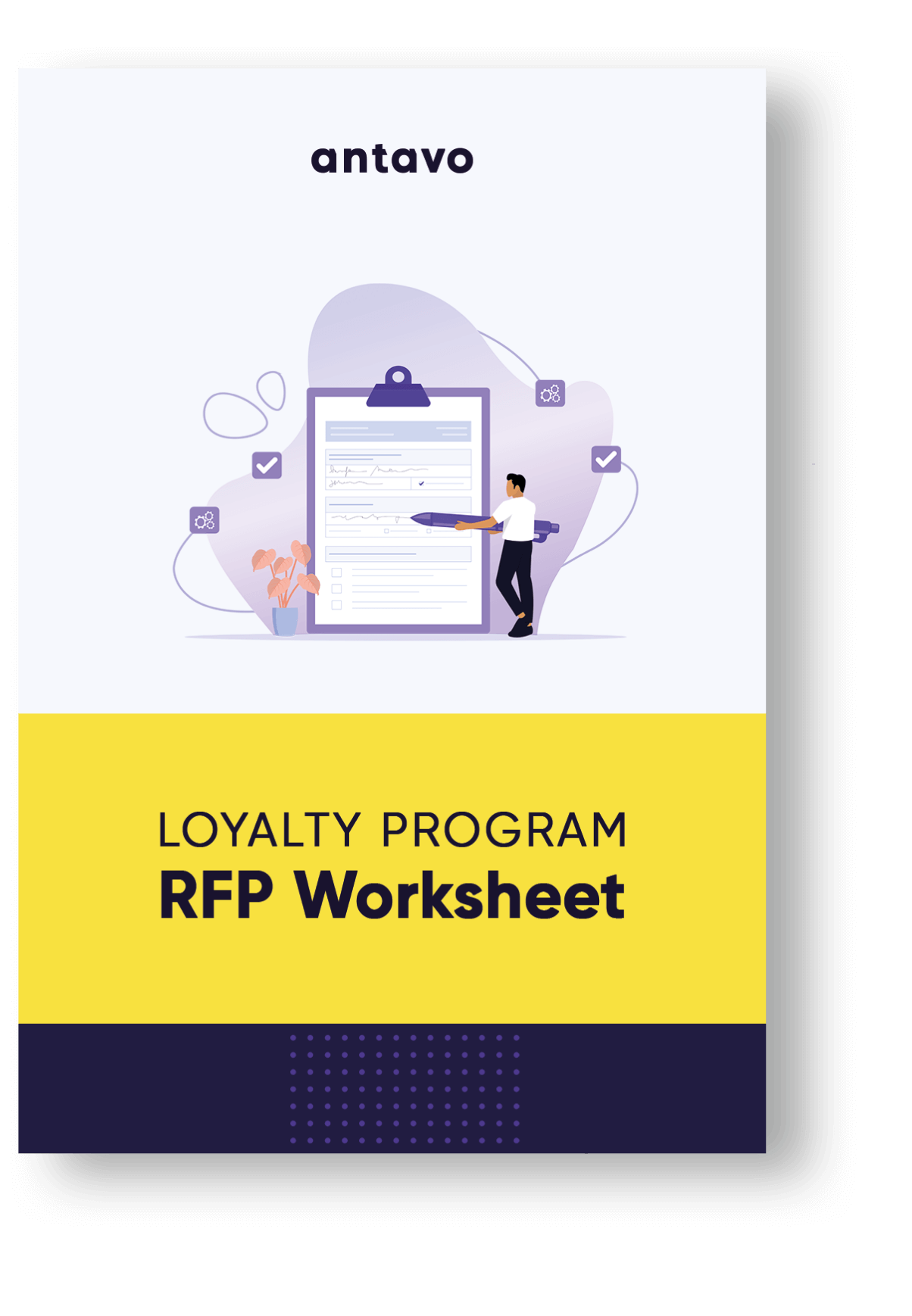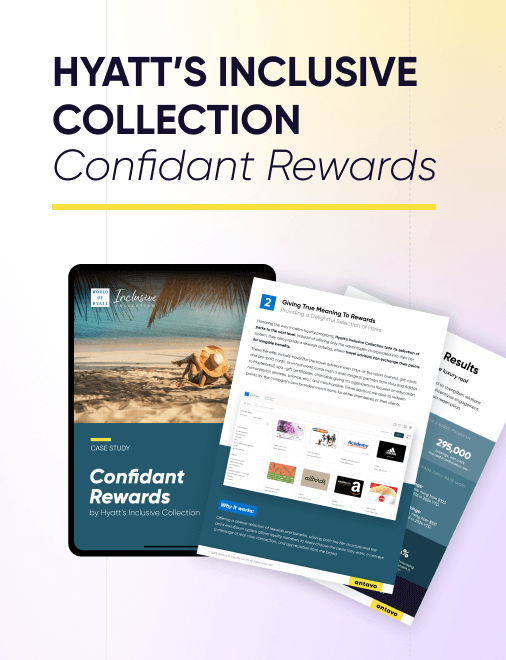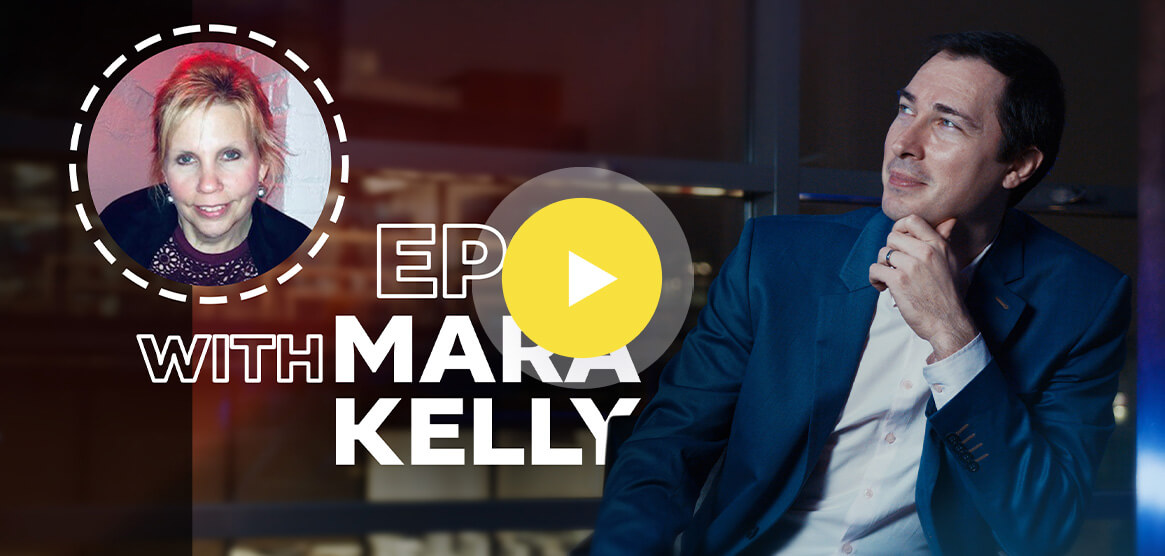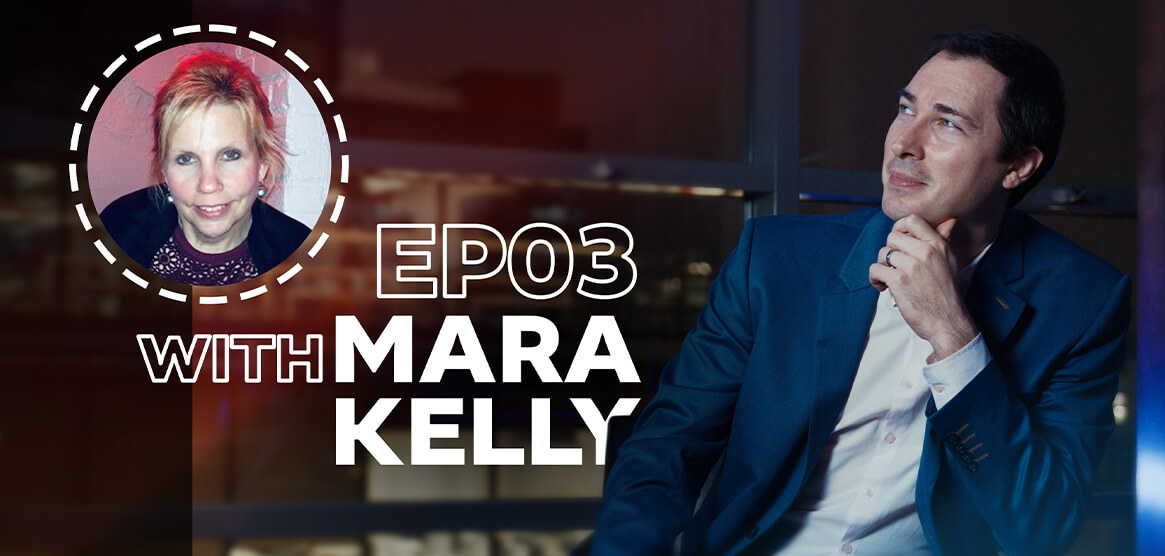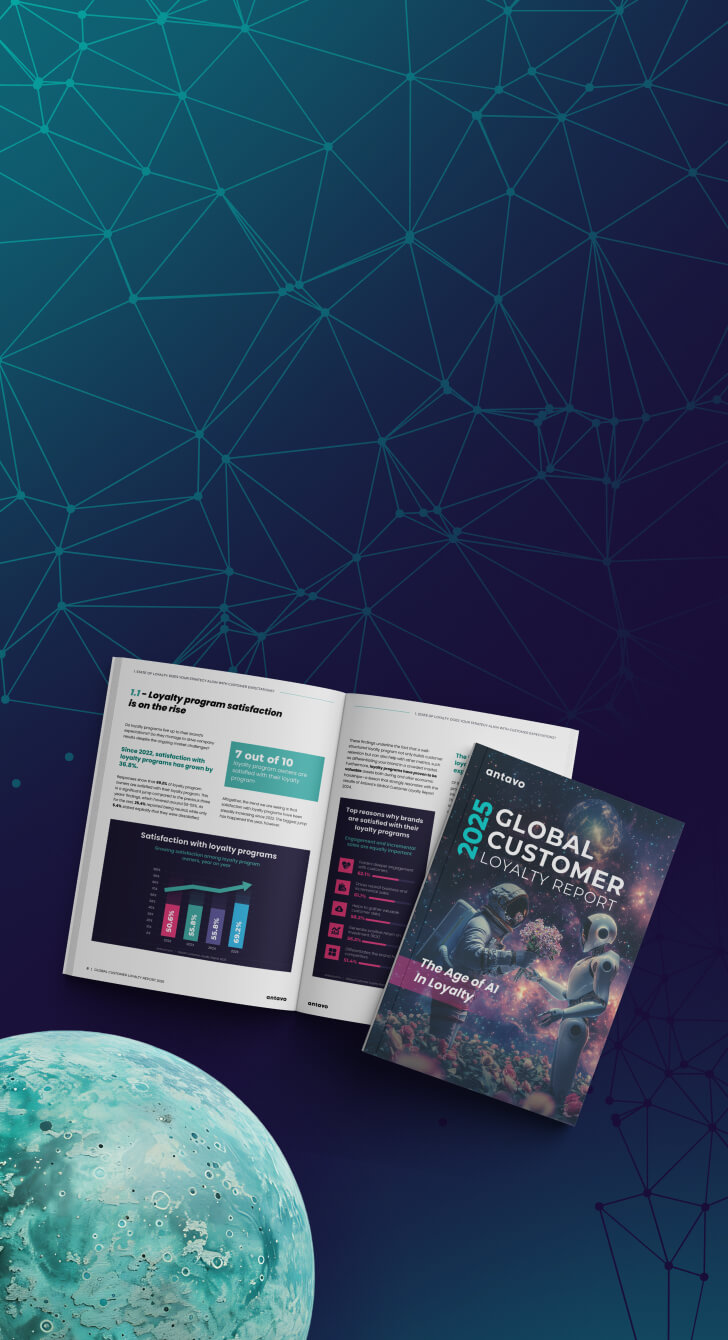Our guest for the third episode of the Loyalty Stories podcast is Mara Kelly, Vice President and Analytics Strategy Lead at Acxiom.
The interview for this podcast has been a valuable source for Antavo’s Global Customer Loyalty Report 2024. Make sure to download it for over 30 statistics on loyalty program trends.
In today’s episode, we highlight why constant evolution is important in the loyalty program sphere, explore some of Mara’s favorite projects, and why the one-size-fits-all approach doesn’t work in today’s climate. We take a look at the biggest industry changes in the past few years, about whether the buy or build in-house approach is more beneficial, and which loyalty features tech vendors should provide for their clients.
Highlights from our conversation with Mara:
- The loyalty program she’s the most proud of
- How perfecting the vision will pay off later
- Whether companies should prioritize retention or acquisition
- Who the main stakeholders are when it comes to loyalty programs
Learn more:
- LinkedIn profile of Mara Kelly
- Acxiom website
- Read about Loyalty Program Data Collection
- Book a demo with Antavo’s loyalty experts
Gabor
Hi and welcome to Loyalty Stories, that is Antavo’s Podcast on customer loyalty and loyalty programs. I am Gabor Vigh, one of the partnership managers at Antavo, and Antavo is a loyalty technology company that empowers loyalty programs all over the world. We help various great businesses such as KFC, Benefit Cosmetics, and very well known global automotive and fashion brands, airports and so on.
In this Loyalty Stories Podcast, we dive into the trends around loyalty programs and customer loyalty. We talk with industry experts all over the world to pick their brains, what’s next, what’s new for loyalty programs. I’m super glad that I was able to arrange this call with today’s special guest, Mara Kelly. She is the Vice President and Analytics Strategy Lead for the emerging markets at Acxiom, one of our key agency partners for the Global Customer Loyalty Report 2024, and also a key partner for Antavo.
We’ve known each other with Mara for a while now, and she has always been a great loyalty expert and a customer engagement specialist to turn to, when I or the team had US market specific questions, so it’s a pleasure to interview her.
Everyone, please welcome Mara Kelly. Hi Mara, how are you?
Mara
I’m good. Thank you for having me. Yes, my name is Mara Kelly. I’ve been in the loyalty industry for most of my career, both on the client and on the agency side, and I’ve had the opportunity to work on amazing brands, whether they were small retailers, large retailers, large hospitality clients, so I’ve really been very fortunate. Focused not just on the strategy, but also implementation, and making sure that whatever programs I have worked on really focused on you know, the consumer.
Gabor
Great, thank you so much Mara for accepting our invitation to today’s podcast recording. Yeah, as I said it’s really nice to have you and it’s like a warm-up question. This is kind of a question I ask from everyone. What is your favorite loyalty program and why?
Mara
Well, I actually have a few, probably like everyone else, because consumers obviously engage and are loyal to brands for very different reasons. Some are loyal because of a particular product. Sometimes it’s just the overall store experience or business experience. And sometimes it’s all about the rewards and benefits.
Again, some brands have a structured program, others are about surprise and delight, so I guess to answer your question, for the more structured program perspective, I think my favorites are probably Sephora, American Express Rewards, and Delta Air Lines. So even though they each have different structures, benefits, and rewards, to me, they all embody similar themes, meaning relatively clear value propositions. They are well integrated into the brand. So you kind of get that clear message when you get your communications.
More importantly, they provide a wide range of options from an earning perspective, from a rewards perspective, and from overall experience. Their partnerships, I think with most all of them, and from Sephora, I think there are partnerships because, you know, their vendors are really the partners.
Communications are relatively personalized, and, you know, to me, most importantly, the program offerings are constantly evolving, which makes me happy because it leads me to believe that they’re really constantly incorporating the voice of the customer, as well as other insights they’ve gleaned.
And when you talk about constant change, for years Sephora, the only rewards you would get theoretically, aside from some in-store experience, were samples from their various vendors, which were great. But sometimes they didn’t appeal to everybody. So more recently, they’ve introduced a dollars-off offering. So now, you know, you can, you can use your rewards towards a discount on your purchase, which, which is great. So those are kind of my, my three favorite programs, if you would.
Gabor
Oh great, I know that a lot of other experts mentioned the Sephora’s program and I believe that we are going to include them in the report as for like analytics and a good example from the market. Yeah. I really like those kinds of sample stuffs and you get those as like a loyalty customer. I am a big fan of one of the tea companies here in the UK and every time I purchase they send me one, two or maybe three sample teas and yeah I don’t need to buy like a caddy full of tea, I am able to just test it at home.
And because you have been working both on the customer and the agency side, I think the next question will be really tricky for you to answer. Because based on your career, what do you think or what do you consider the most successful work or that you are most proud of?
Mara
The most successful program, I probably have a few. Out of all the ones I’ve worked on, the ones that have been most successful for me, whether I was on the client or agency side, were ones that I was allowed to kind of take the right approach. Lots of clients, or even working on the client side, you know, there’s always this urgency, like the speed to market.
Like once you decide you’re going to do a loyalty program, let’s just do it fast. And that creates lots of problems because, you know, you want to make sure that whatever program you do develop and whatever technology platform, you know, you do select, it’s really a thoughtful process and you want to make sure that, you know, whatever you do will yield the results.
Not to mention, you know, drive the right impact, right? Making sure that the financial proposition works out for both the consumer and the business. So from, so I can tell you about the client side, my favorite program that I’m most proud of, as well as on the client side. So as a client, when I worked at Toys“R”Us, I had the opportunity to relaunch the Toys“R”Us program.
Where we were able to pivot the focus from a company-centric program where it was originally designed, to more of a customer-centric program and was able to introduce many new benefits and experiences and partnerships along with modifying the earn and redemption requirements. We did that because the new program was really developed based on leveraging all those insights that we got through extensive customer analysis and research.
And we created, you know, a very robust financial model to make sure that we could demonstrate to the organization the potential of the program, right? Because it is an investment and people have to believe in it across the organization, otherwise it will fail.
So, you know, based on what we had proposed, you know, the stakeholders across the organization were interested and we were able to gain alignment. Because, you know, customer loyalty isn’t just about a technology or about a platform, it’s really about, you know, fostering that relationship. And loyalty touches every aspect of the business. So it’s really important that everybody comes together and supports it. So that was a great moment for me.
And in support of the new program, we were able to develop a personalized communication strategy that really integrated messaging throughout and helped drive, you know, tremendous response. We also included a fully integrated credit card component, which allowed members to earn, you know, twice as fast and provided additional benefits. And through all of that, you know, the impact was quite large. We went from having about 10% of people earning rewards to close to 50% as more customers became engaged. So that was one of my success stories, I think.
On the agency side or the vendor side, I also had great client experiences. But the ones, the programs that I am most proud of are those that had really made an impact, both from a financial perspective, but also with regards to positive customer sentiment, right? So one of the most challenging and complex brands I worked on was a multi-brand program that touched seven brands, that all had different margins, slightly different brand positioning and different visions across each brand president, right?
So rather than really create and launch a program right out of the gate, we thought the best approach was to really create a pilot, right? Put in market what the vision was before we cemented it in stone, if you would, to really test, and understand the receptivity. So, through careful planning and workshops and customer analysis, we started a pilot program. And no new technology was required because it was more kind of like a manual test, believe it or not. But it allowed us to understand receptivity and new purchase patterns.
And the learnings from the pilot were extremely helpful in shaping the final program, which is still in existence today and encompasses seven multi-channel brands with cross-bend and cross-earn redemption privileges, along with a credit card component and lots of amazing experiences for those members. It definitely also provided positive results after the first year in market and it continues to evolve as it should.
Gabor
This is great to hear. Thank you for sharing this success story with us Mara. And if you look one, two, maybe three years back in the loyalty and customer engagement space, what do you see? What were the biggest changes on the market?
Mara
You know, over the past few years, especially with all the cookie deprivation and stuff and third-party data, and all that wonderful stuff that’s been going on, it seems like everybody wanted a program. Whether it made sense for their business or not, thinking that it was a great way to facilitate first-party data, and you know, sometimes it would work and sometimes it wouldn’t. But for those businesses, where the program really made sense, I think the changes have been really on a new focus on partnerships, experiences, gamification and choice, right?
Realizing that loyalty should not be one size fits all. There needs to be options and you need to be able to offer your different types of customers choices. People are, you know, businesses and people are trying to move from that transactional only to more experiential. And many are focusing on the overall customer experience and touch points across the brand.
From a technology perspective, there have been some new inexpensive kind of self-serve loyalty platform options. Primarily, I see it in the D2C space where it’s allowing smaller brands to get into loyalty, but they’ve got constraints because these platforms or solutions don’t really offer the right functionality to support a robust program. So it’s been kind of, kind of a challenge for them. So hopefully that will be changing somewhat in the future.
Gabor
This is great to hear because it’s really close to what we see on the market as like past trends as well. And if we look into the future and the future of loyalty programs, what do you think what the two main trends will be around loyalty? You can even name three if you would like to.
Mara
Not sure if there’s going to be anything truly fresh. But I think the trends that we’re currently seeing will hopefully be perfected, right? So better personalization, really making sure that people are offered and feel embraced by the brand based on what their interests are.
Increases in partnerships. I think that’s a great way for growth. More customer focused, better choices and experiences, and better integration between the brand promotions and loyalty offerings. You know, lots of times, specifically with retail, there’s so many crazy promotions going on that sometimes those are more valuable than a loyalty offer.
So there really needs to be a lot more synergy, I think, and hopefully there will be going forward as technology improves and more brands are focusing on the overall customer experience and journeys. So I think what’s in the market today is going to continue, just hopefully improve.
Gabor
Great. And what do you see how a loyalty technology company should support all of these features or like support a trendy and modern innovative loyalty scheme? What are the most important capabilities that you would consider when picking one technology for your customer?
Mara
I would want to make sure that a technology vendor would be nimble, be able to support an overall program vision rather than just be the showstopper. I’ve been in many situations where you come up with these great strategies, great things that you want to implement and you start working with a partner, and they can’t offer that solution for you. And some of them are really simple.
A lot of it has to do with obviously pre-planning and really understanding what you want to accomplish and whether that technology can really support it. But if you have a partner that’s willing to think out of the box and realize that they might need to make an investment, right, but it should carry through to other parts of their business.
So yeah, to me, it’s just thinking out of the box, having that right vision, putting the customer first, and making sure that the technology supports it. I think technology that also can help clients or businesses leverage various decision engines, or whether it’s artificial intelligence or machine learning, to really make sure that consumers can get those personalized communications, messages and offers delivered and that there’s insights that can be gleaned from all of that information.
So good reporting, a platform that can offer access to the data so that various analysts can leverage those insights.
Gabor
Yeah, this is what we experienced as well. It’s not as straightforward, for example, adding a marketing automation tool, let’s say or a CRM platform. Yeah, and sometimes loyalty can be kind of like new to many companies to discover.
And my next question is kind of like touches back on the technology side and keeping the customer requirements in the front. What do you think, what would be the best solution or in general? Buy or build in-house?
Mara
Personally, I think building a house is very difficult. And I think once you do that, you lack the ability to constantly evolve. So I’m always a fan of outsourcing to the experts who are, you know, working on programs for many other folks, where they can bring best practices and ideas.
Gabor
With this kind of economical climate, it’s there like a lot of companies struggle. What do you think how will, or what will be the trend around customer acquisition and retention?
Will, for example, companies put more effort and more money into customer acquisition, or would they, for example, just maintain the same level and put the money towards retention?
Mara
I think it depends on the business. So, and what the businesses are offering, right? So retention is very important and that to me is where loyalty comes in. Acquisition is very expensive, but depending on what type of business you’re in, acquisition is, you know, key. Especially if you’re a new organization, most of your money will be put into acquisition and then hopefully it will, you know, lessen over time.
I guess across the board, if you had to be on average, I would say, you know, it’s cheaper to keep an existing customer than find a new one. So retention should be a main focus, which also obviously leads to customer advocacy and helping you drive acquisition naturally.
Gabor
Great, thank you very much Mara. And yeah, my last question for today, for this podcast is that we have started to see kind of like a change in terms of like stakeholders for a loyalty project. Who do you see the main stakeholders are from your perspective? Who do you speak with when it comes to loyalty and loyalty strategy?
Mara
A combination of a chief marketing officer, a chief technology officer, and a chief financial officer, right? Because those are the three pillars that it really touches. Speaking with the CEO is great, because then it comes from the top down and they really embrace it. And it helps the program to be part of the brand identity.
But yeah, it used to be just kind of the marketing officer, and now technology and finance are really getting involved, which I think is great. Sometimes also operations, because they’re the ones that actually have to help get everything done and fulfill everything, especially from a customer services perspective. But the initial conversations are usually with those three stakeholders. I don’t know if that’s what you guys are seeing as well.
Gabor
Yes, yes, exactly. So there’s like a 100% crossover what you just listed here Mara. So we saw an involvement from the CFO more and more often, also from top down from CEO level as well. Like for example, like two, three years ago, it was mainly either the CTO or CIO, or someone from the marketing team like CMO or head of loyalty. Yeah, amazing.
Is there anything else that you have in mind Mara, that you would like to share with the audience?
Mara
Yeah, I know there was another question around just, you know, trends evolving, right? Like, what’s going to happen in the future? So, you know, what I kind of really hope is that organizations realize that they’re sitting on a goldmine of information, right? About how their customers behave, what benefits and services are of interest to whom and where their opportunities are.
And I think, as things evolve, this data can really help fuel a whole bunch of, you know, analysis and decision engines that can drive, you know, those real-time offers and personalized communications that can really help, you know, drive the program value and, you know, the customer engagement. So I hope people embrace that more and more as things continue.
Gabor
Great, yes, this is very important. In addition to loyalty programs, you have data, zero-party, first-party data, and also merging data with external sources, like CRM, CDP data. So I know that Acxiom is super talented in that, and this is your expertise that you can add as well, Mara, and also on Acxiom level as well. So definitely there’s a very heavy synergy between I would say like Antavo and Acxiom’s endeavor, because we can support each other with valuable data that helps that personalization bit that you highlighted before Mara. Okay, great.
Lovely. Thank you so much Mara for being here with us. I really enjoyed our conversation. I really enjoyed the bits when you were saying that everyone kind of like want a loyalty program. Definitely there’s high demand for loyalty programs, but not everyone can afford it or ready for loyalty programs, but definitely the need is there.
When you mentioned that emotional loyalty programs are in need and the number of requirements for these kinds of programs are increasing, this is definitely something that we align what we see on the market. And when you were talking about the trends like when customers want to have better choice in rewards and companies want to provide more personalization, but also this is a requirement from the customer side.
That’s when this data piece can come into that, it can fuel decisions and also it can drive program value. So with the help of AI and ML (machine learning), I think this is definitely something that a lot of loyalty programs will provide to customers.
And for the viewers, wherever you listen to us, be it on a podcast platform, YouTube or LinkedIn, please like and subscribe to our channel. So in this way, you will get notified when the next episode is out and also tell us what you think and what’s your point of view on loyalty in the comment section below.
Don’t forget to visit antavo.com to discover your next loyalty software.
Antavo is a next-generation loyalty program technology company used by global companies like KFC, Benefit Cosmetics, automotive and fashion brands, QSRs and airports all over the world. And also visit Acxiom’s website at acxiom.com, because I know sometimes we mix these two characters.
And also don’t forget to check out Mara’s LinkedIn page to find out more exciting details of her work.
Thank you and see you on the next one. Bye for now.
